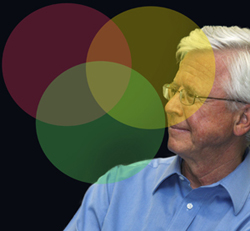The sensor is unusual in that most sensors known today have one or more detection means, while this sensor contains three

A particularly sensitive sensor, which integrates a variety of test methods (electrochemistry, spectroscopy and selective distribution), was developed at the University of Cincinnati. This sensor has already been tested and succeeded in detecting substances found in nuclear waste.
The sensor is unusual in that most sensors known today have one or more detection means, while this sensor contains three. In other words, the new sensor utilizes three different ways to detect and identify a desired substance. This characteristic is important for complex systems, such as in a nuclear waste storage tank, where there is a mixture of chemical waste as well as radioactive waste together. In addition to this field, the sensor should have a variety of applications, including tests in different environments and even in the field of medicine. The research findings regarding the sensor will be presented at a conference of the American Chemical Society by William Heineman, professor of chemistry at the University of Cincinnati.
The research regarding this type of sensor began a decade ago and received assistance from the US Department of Energy for most of this period. "The ministry was interested in developing a sensor that can be inserted into a waste container and is able to perform a multitude of measurements quickly or that can be left in the container to receive long-term monitoring of months and years," explains the researcher.
The design and main ideas of this sensor could be used in many other environmental or medical monitoring systems. Such systems could be used to identify harmful substances such as toxic heavy metals or polycyclic aromatic hydrocarbons at different sites.
The three different means of detection originate from a special coating layer, electrochemistry and spectroscopy. The selective coating layer allows the entry of very specific compounds into the interior of the sensing area. For example, all negatively charged ions will be able to penetrate the sensor, while positively charged ions will not be able to do so. In the next step we come to electrochemistry. An electric potential is applied to the sensor which limits an even smaller group of compounds undergoing electrolysis. In the final step, a highly defined wavelength is used to detect the individual compound being tested.
The end result of this sensor is that compounds present even in very low concentrations can be detected and characterized. This ability is especially important in medical monitoring and other applications that require high selectivity and sensitivity.

3 תגובות
What materials does it recognize? Or can you teach him materials?
And everything in real time or does he send the results after a week?